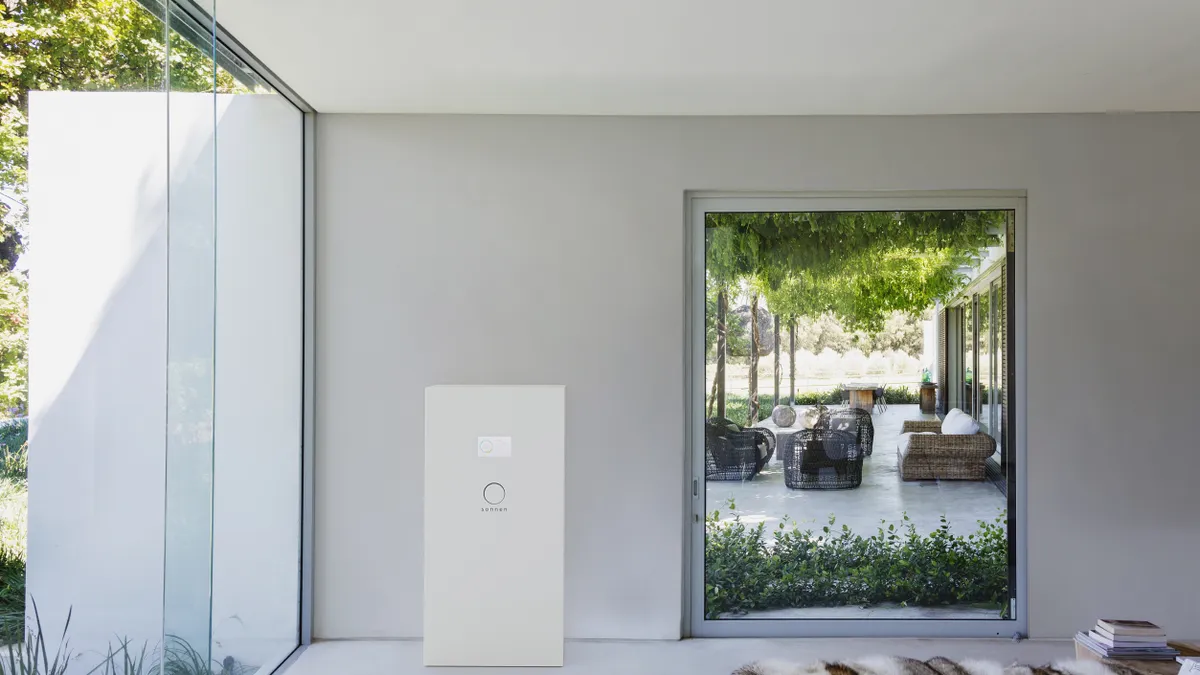Dive Brief:
-
In a first for the industry, there were more home energy storage installations in the second quarter than front-of-the-meter installations, according to the latest U.S. Energy Storage Monitor from Wood Mackenzie Power & Renewable Energy Consulting and the Energy Storage Association.
-
The total U.S. energy storage market deployed 156.5 MWh in Q2, marking a 24% increase from the 126.3 MWh in Q1. The recent quarter tripled the amount deployed during Q2 2017.
-
The growth of residential deployment helped put the total energy storage sector on track to reach an estimated 393 MW / 774 MWh of deployments for 2018 and a total of 3,890 MW / 11,700 MWh by 2023.
Dive Insight:
While the growth of the residential market segment will remain strong, the authors of the report do not expect that pace of growth to continue for the rest of the year due to the lack of supply.
Residential installers and distributors are saying that there are not enough residential storage systems available to meet demand, Brett Simon, senior energy storage analyst at Wood Mackenzie Power & Renewables, told Greentech Media.
Usually the second half of the year tops the first half, but because of lithium-ion constraints, Simon is expecting comparable numbers for residential energy storage deployments in the second half. Longer term, however, Wood Mackenzie does not expect lithium-ion battery supply to be an issue because several large battery manufacturing plants are scheduled to open early in the next decade.
Another report also saw strong growth in residential energy storage. The Smart Electric Power Alliance (SEPA) reported that residential energy storage additions grew by 202% from 2016 to 2017 while non-residential storage deployments grew at only a 9% rate.
The Wood Mackenzie report found that most of the growth in the residential storage market came from California and Hawaii, which accounted for 72% of the megawatt hours of energy storage deployed in the second quarter.
Most of the growth in storage deployment over the second quarter was the result of a rebound in the non-residential market and the continued strength of the residential market, the report said.
The strong performance of residential energy storage is not "an aberration," Simon told Utility Dive via email. He expects the economics of residential storage to continue to improve, as net metering programs change and utility tariffs shift to more time-of-use rates. In addition, "BTM solar installers continue to improve their understanding of storage and are more heavily investing this piece of their business line," Simon said.
Simon expects California and Hawaii to continue to lead the residential energy storage market because of favorable policies. California’s second Demand Response Auction Mechanism 2019 results included at least 2 MW of BTM energy storage. And the state’s Self Generation Incentive Program, which offers incentives for BTM storage projects, was recently extended by the legislature with $800 million in funding.
And in Hawaii, the Public Utilities Commission issued an order allowing existing solar systems that use net metering to add storage as so long as the existing net metering export limit is not exceeded.
Simon also sees new markets opening up for residential storage, such as Arizona and Massachusetts. New tariff structures in Arizona could encourage more residential storage, he said, and stakeholders in Massachusetts recently reached a compromise on the ownership of capacity rights that could clear the path for pairing solar and storage projects under the Solar Massachusetts Renewable Target (SMART) program.














